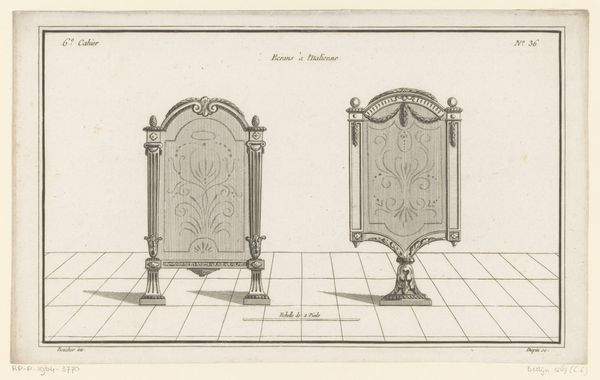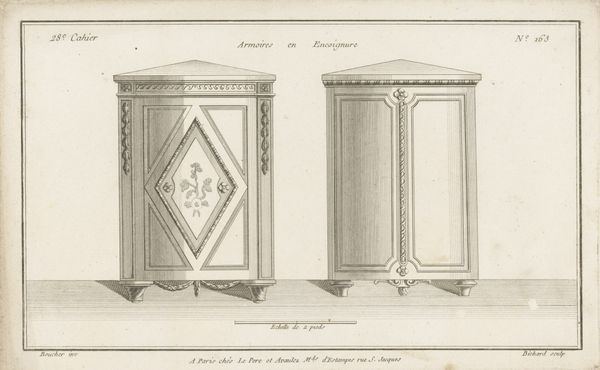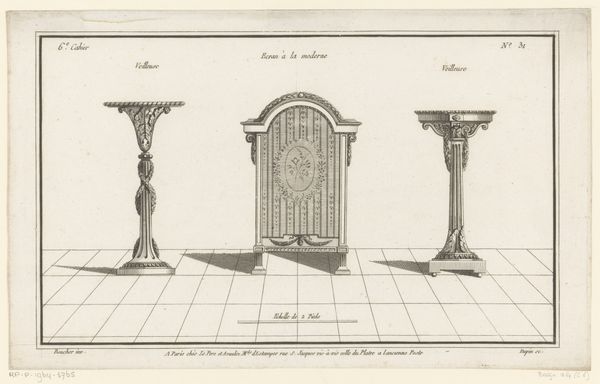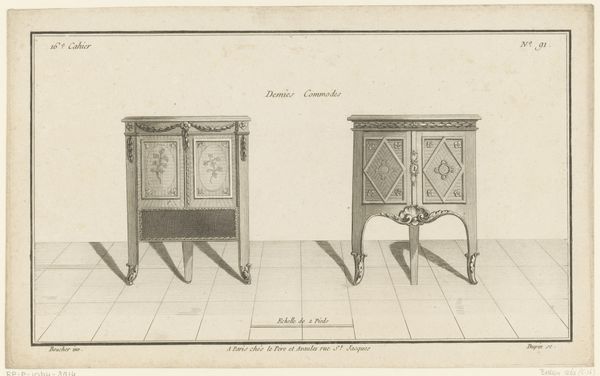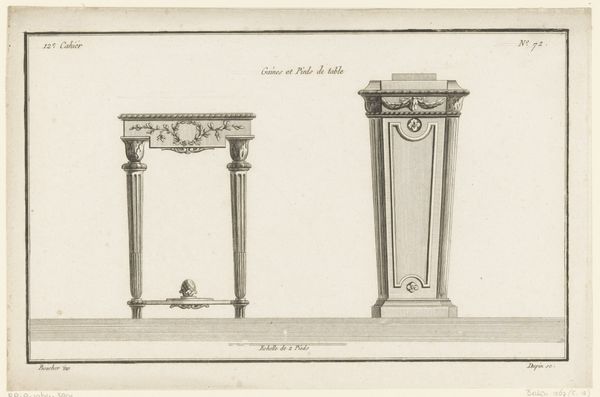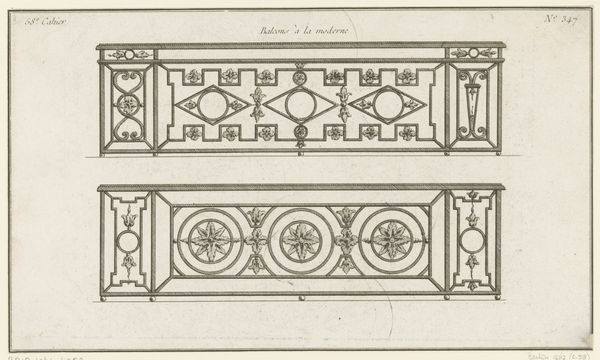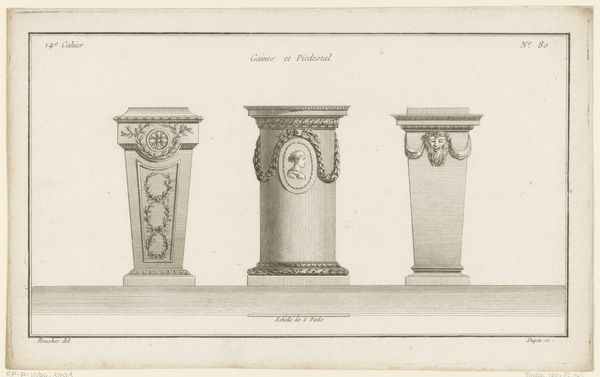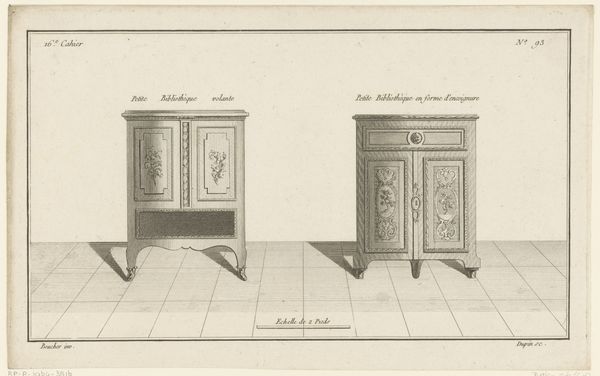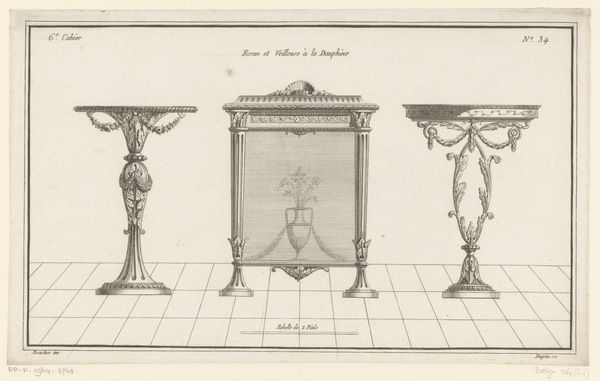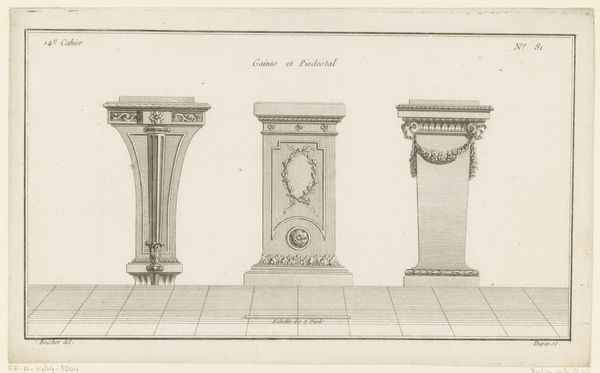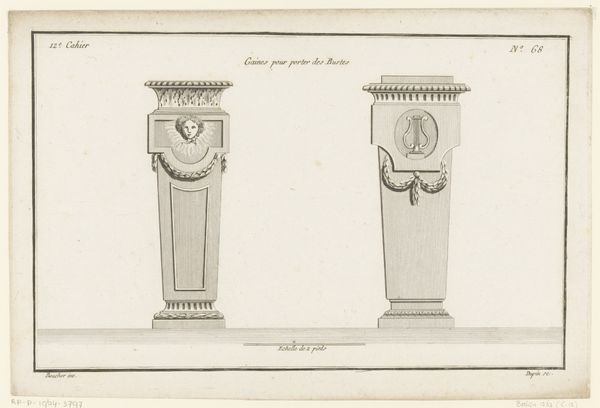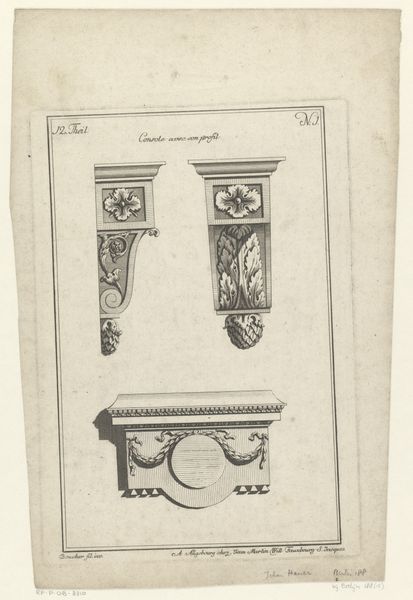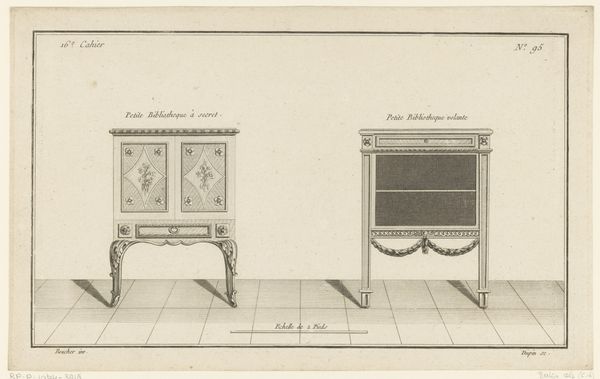
drawing, paper, engraving
#
drawing
#
neoclacissism
#
old engraving style
#
paper
#
form
#
decorative-art
#
engraving
Dimensions: height 202 mm, width 329 mm
Copyright: Rijks Museum: Open Domain
Curator: This engraving, titled "Twee haardschermen," offers a glimpse into 18th-century decorative arts. Created between 1772 and 1779 by Nicolas Dupin, it presents two designs for fire screens in elegant detail, and is held today in the collection of the Rijksmuseum. Editor: The stark linearity is the first thing I notice. The mood is very cool and formal, almost sterile, despite the decorative nature of the objects represented. It's a technical drawing as much as it is a design. Curator: Precisely. The work belongs to the Neoclassical movement, reflecting the era's fascination with classical form and order. Dupin's fire screens can be seen as objects of bourgeois aspiration, speaking volumes about social status and domestic life during the period. They are essentially signifiers of wealth in the home. Editor: How fascinating to consider the fire screen itself, and fire generally, as a locus for social interaction and gender roles! While men conduct the economic 'fire' of the household outside, women preside over the actual hearth. And it also reminds me of contemporary dialogues around sustainability. Consider how the reliance on excessive burning fuels not only warmth, but global inequities. Curator: I see how you are connecting energy politics to this historical object, even within the decorative arts and societal expectations embedded within it. The screens are very much an outcome of social conventions. The formal compositions echo a societal need for structure and controlled imagery, which we might link to broader power dynamics of the era. The design and display would have signaled very specific notions of taste, status and perhaps even gender performance. Editor: Considering their size and material delicacy, one questions how effectively the screens would have performed their primary function. They might then serve foremost as representations—cultural indicators more than useful instruments. Curator: Indeed, this analysis reveals not just aesthetic tastes but also how social meaning and function intertwine within these objects. Thanks for pointing that out! Editor: Thank you, understanding these fire screens more comprehensively gives a unique view to a time of societal change!
Comments
No comments
Be the first to comment and join the conversation on the ultimate creative platform.
